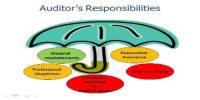Difference between Concurrent tests of control and Planned test of control
The procedure to test the effectiveness of controls in support of a reduced assessed control risk is called tests of controls. Concurrent testing is a software testing activity that determines the stability of a system or application under test during normal activity. The planned test of control is performed during the field work and should provide evidence of the proper and consistent application of a control policy of procedure throughout the entire year under audit.
Concurrent test of control
- Definition: a Concurrent test of control consists of procedures for obtaining an understanding that also provides evidence about the effectiveness of a control policy or procedure.
- Performed: These tests are performed at the option of the auditor under either audit strategy.
- Cost: Concurrent tests of controls are usually very cost efficient and they reduce the extent of an additional test of controls to be performed later in the audit.
- Support: Evidence from concurrent tests of controls will support an assessed level of control risk in the ranges slightly below maximum to high.
- Example: The auditors may make inquiries about the existence of a budgetary system in obtaining an understanding.
Planned test of control
- Definition: a Planned test of control is performed during the field work and should provide evidence of the proper and consistent application of a control policy of procedure throughout the entire year under audit.
- Performed: They are not ordinarily performed nada the primarily substantive approach.
- Cost: This test is also known as additional tests of control not very costly.
- Support: Planned tests of controls are performed to support the initial planned assessed level of control risk moderate or low and the corresponding planned level of substantive tests.
- Example: They are performed when it is likely that additional evidence will be obtained to lower the initial assessment of control risk.















